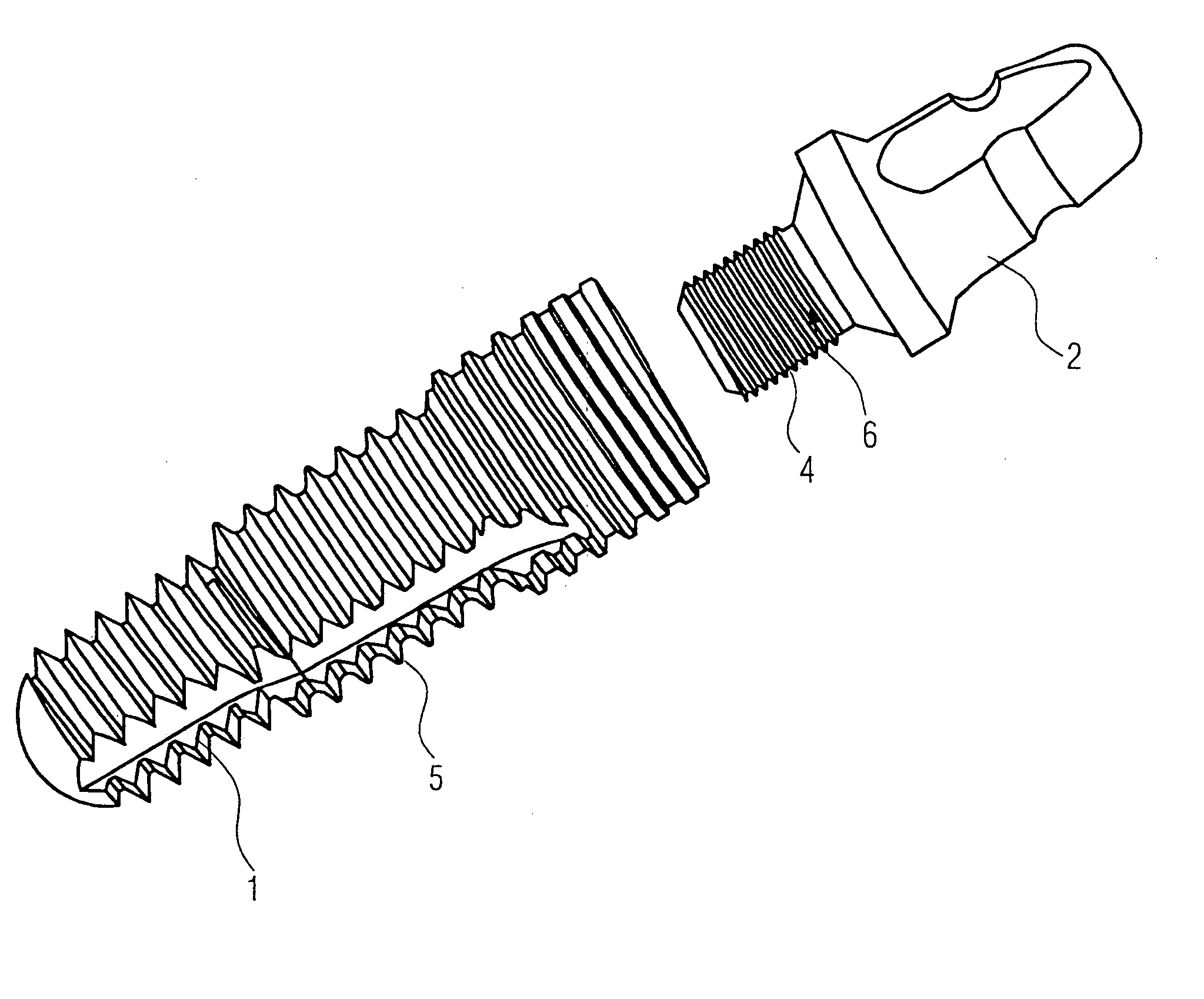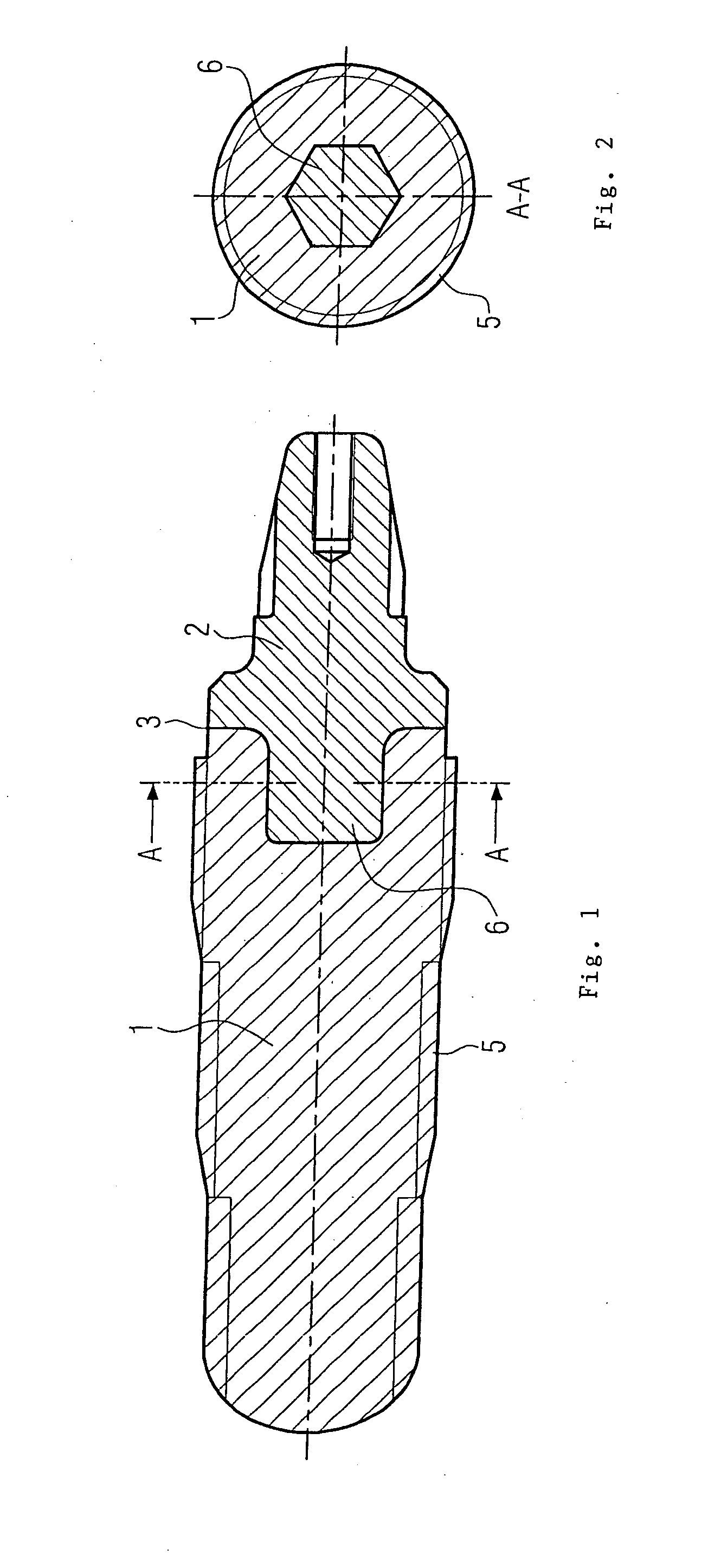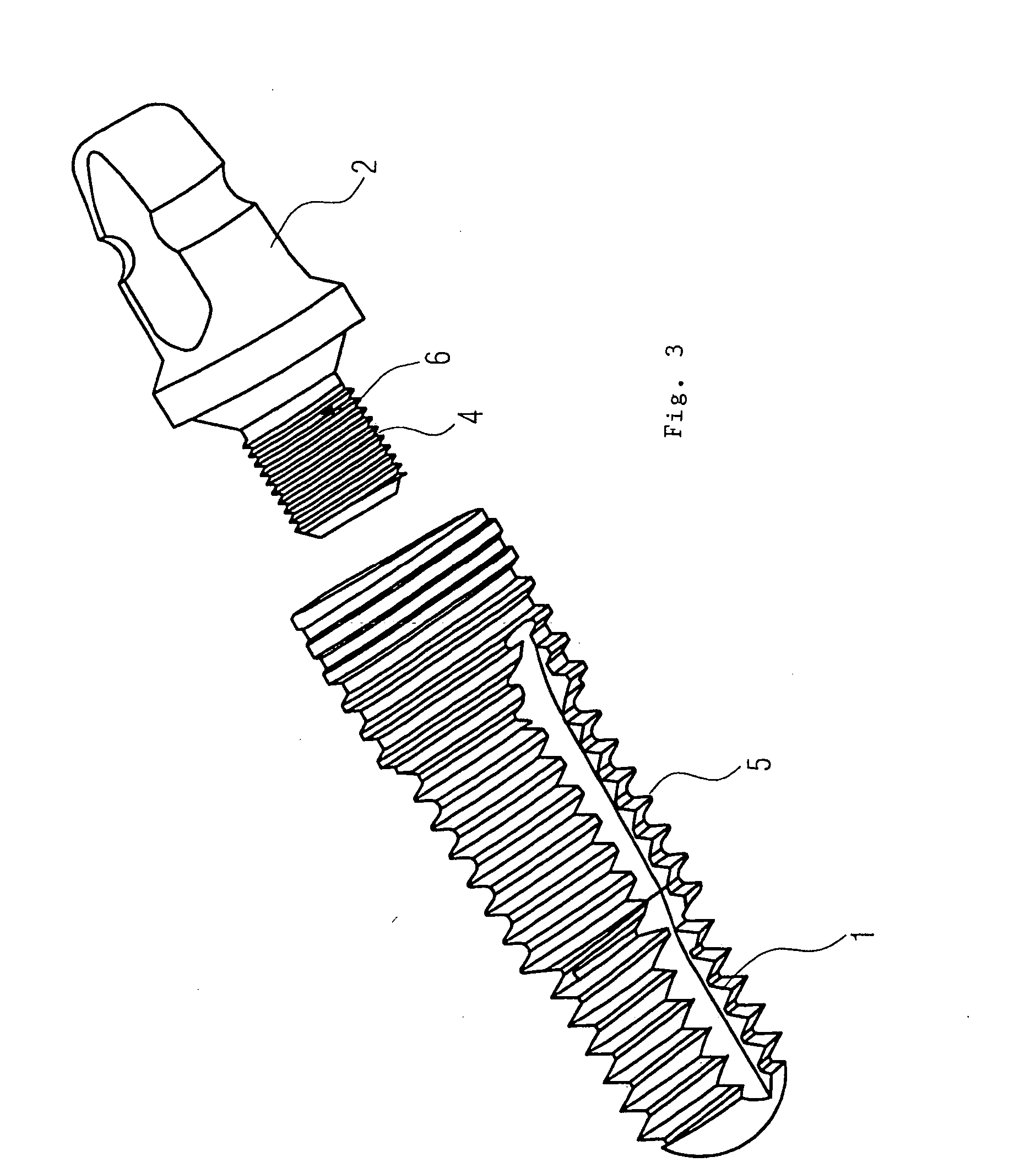Dental implant
- Summary
- Abstract
- Description
- Claims
- Application Information
AI Technical Summary
Benefits of technology
Problems solved by technology
Method used
Image
Examples
Embodiment Construction
)
[0027]Referring now to the drawings, one embodiment of a dental implant, according to the present invention, is shown. The dental implant has an enossal portion made of a metallic material, e.g. titanium. At their outsides, the embodiments respectively have a three-part external thread 5 having different outer diameters as well as different forms of the thread, as it is known from the state of the art.
[0028]The dental implant also has a coronal portion 2 integrally connected to the enossal portion 1, the coronal portion being made of a ceramic material, e.g. zirconium oxide ceramics. However, it is also possible to use other ceramic materials or mixed ceramics or diffusion ceramics.
[0029]The enossal portion 1 and the coronal portion 2 are integrally connected in the area of a connecting portion 3. The connecting portion 3 may be formed by soldering, welding, or bonding.
[0030]The embodiment shown in FIG. 1 provides a pin 6 at the coronal portion 2, the pin 6 being insertable into an...
PUM
 Login to View More
Login to View More Abstract
Description
Claims
Application Information
 Login to View More
Login to View More - R&D
- Intellectual Property
- Life Sciences
- Materials
- Tech Scout
- Unparalleled Data Quality
- Higher Quality Content
- 60% Fewer Hallucinations
Browse by: Latest US Patents, China's latest patents, Technical Efficacy Thesaurus, Application Domain, Technology Topic, Popular Technical Reports.
© 2025 PatSnap. All rights reserved.Legal|Privacy policy|Modern Slavery Act Transparency Statement|Sitemap|About US| Contact US: help@patsnap.com



